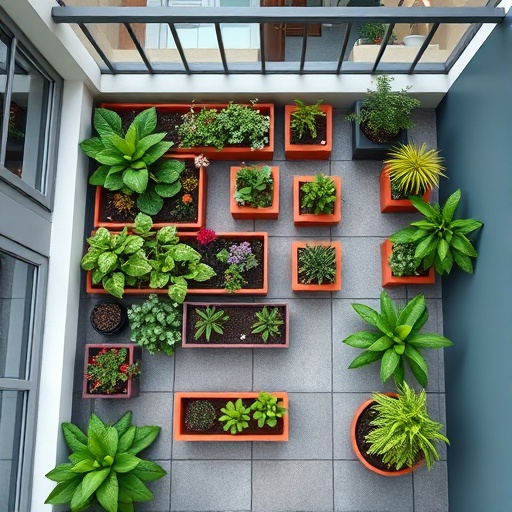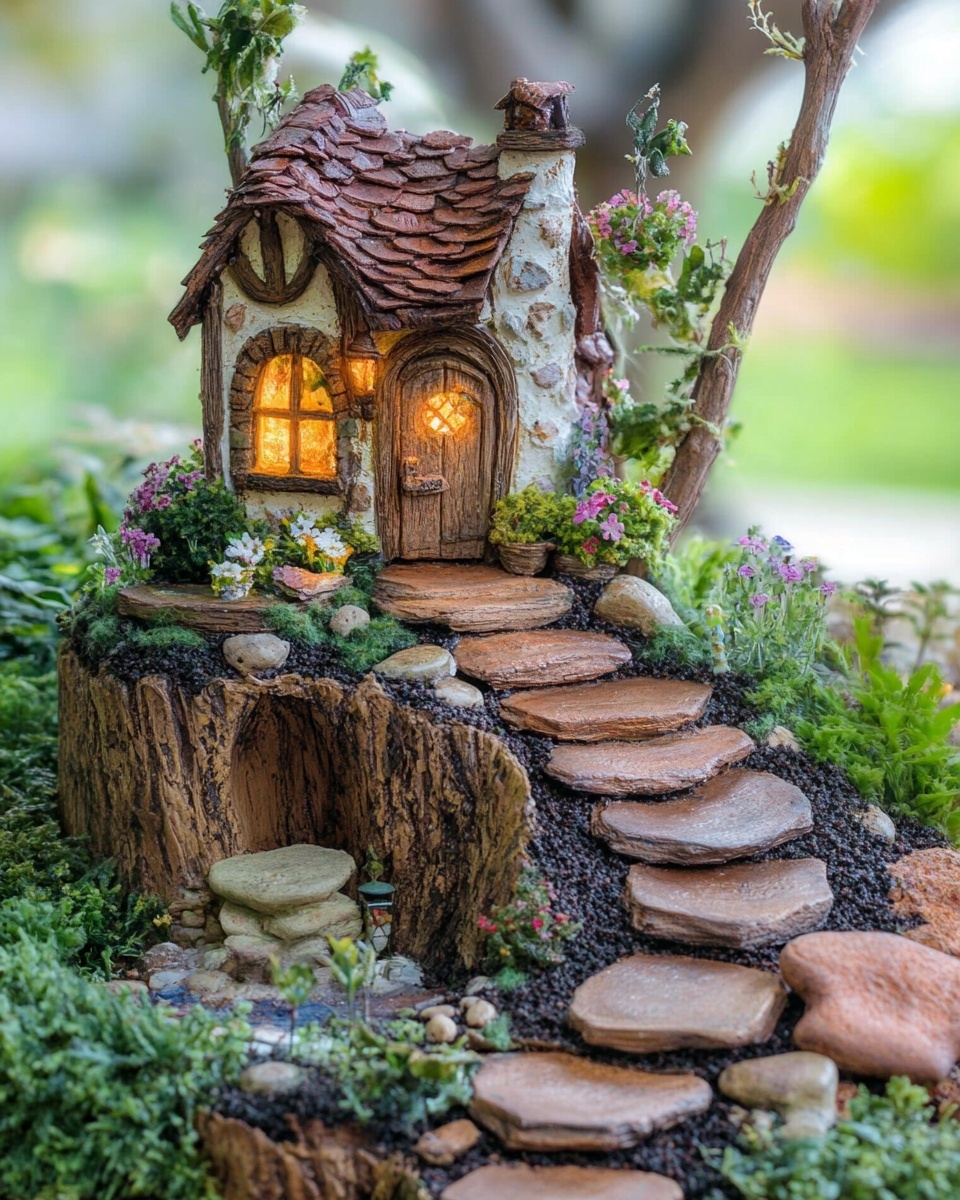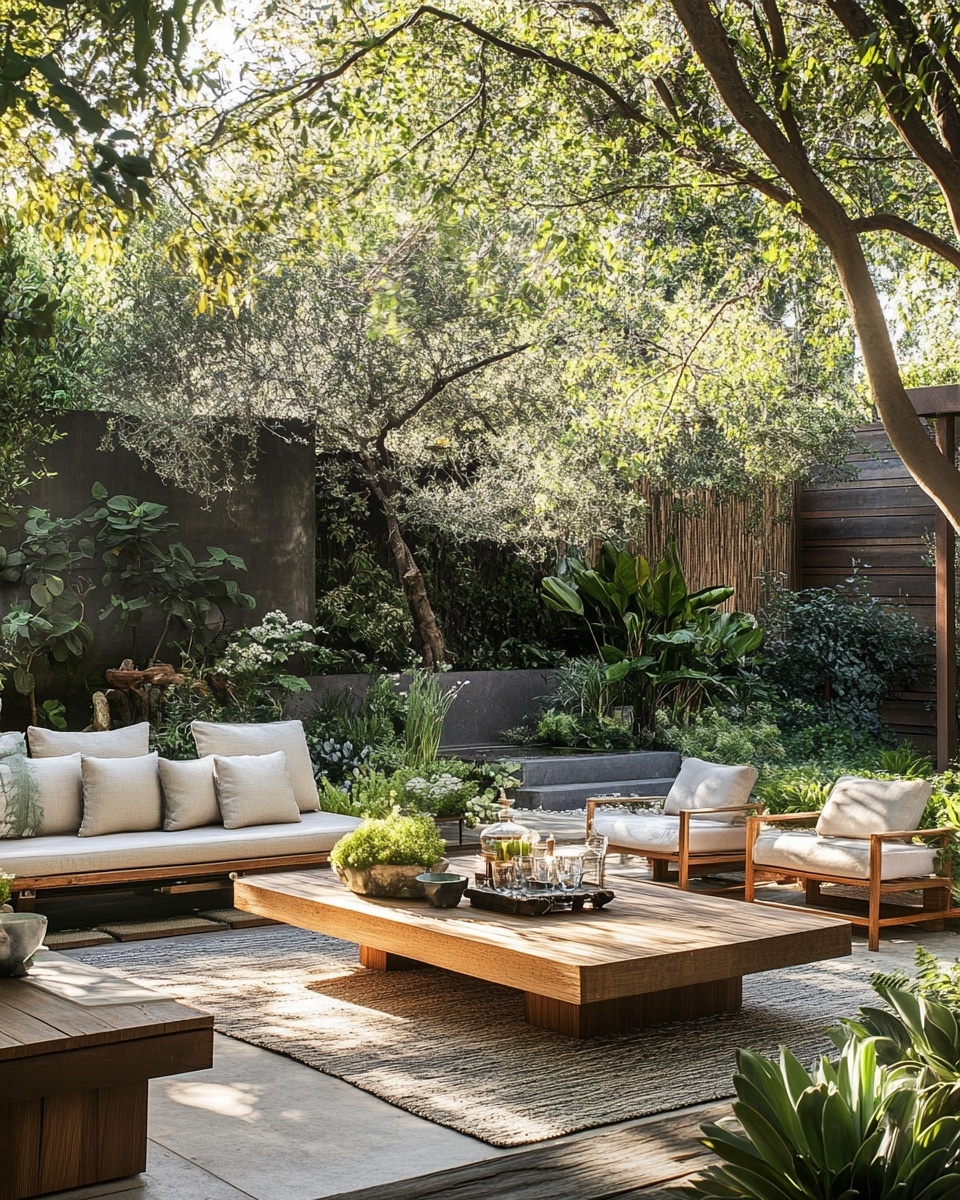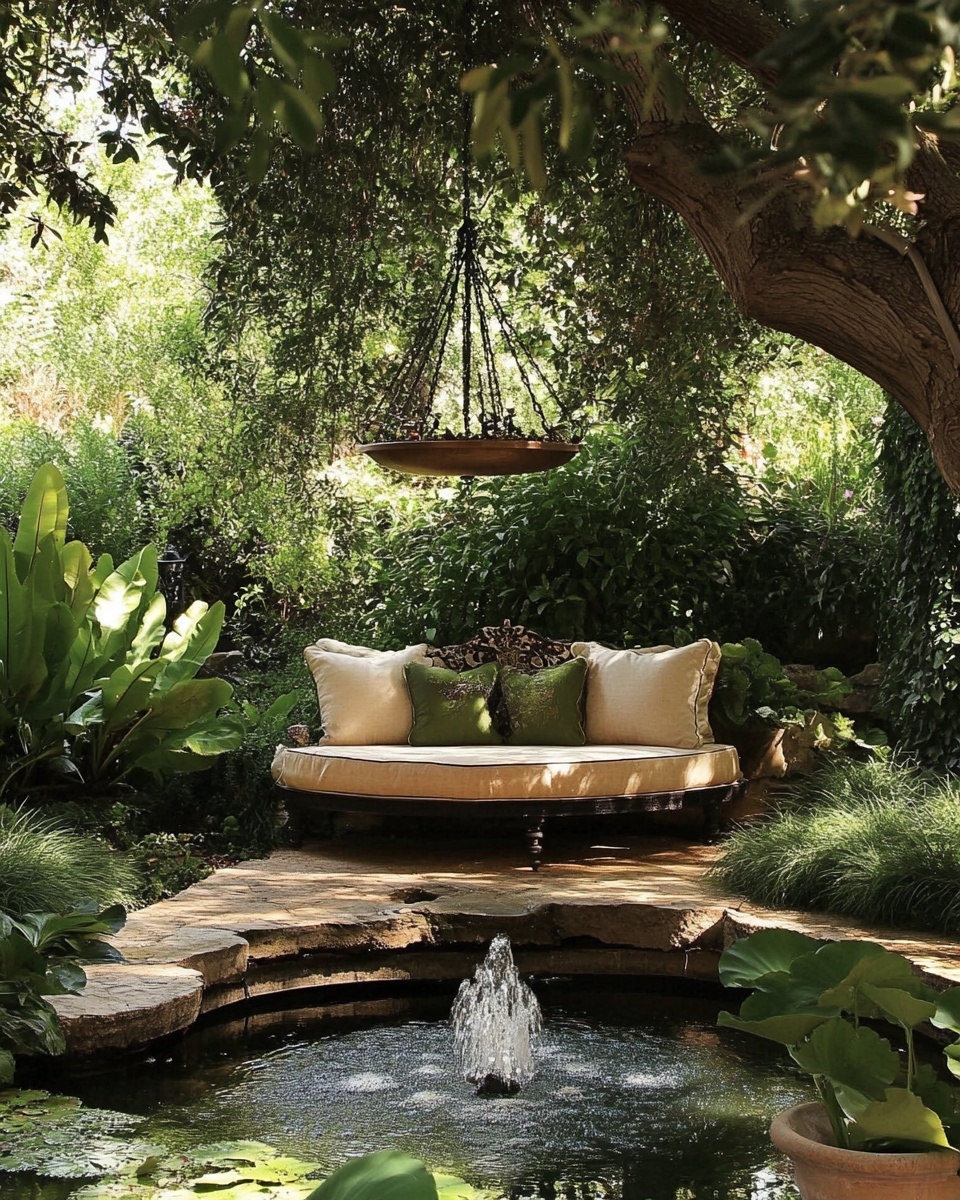Introduction
Ever thought that your compact living space completely rules out the joy of fresh, homegrown herbs? Think again! Many urban dwellers believe a thriving garden requires acres of backyard, but I'm here to show you that some of the most rewarding gardening experiences can happen right on your balcony or even a sunny windowsill. This guide dives deep into creating fantastic small garden ideas on a budget, proving that lush greenery and culinary delights are within everyone's reach, regardless of square footage or economic constraints. Forget the notion that gardening is expensive or space-prohibitive; with a strategic approach, a beautiful and productive herb garden is not just possible, but surprisingly easy to achieve.
Tools & Materials Needed
Creating your balcony herb haven doesn't require a hefty investment or professional equipment. With a few thoughtful choices, you can gather everything you need without breaking the bank. Here's what you'll want to hand:
- Containers: Don’t overthink this! Recycled plastic containers (with drainage holes added), old ceramic pots, even sturdy repurposed food containers work beautifully. For a touch more aesthetic, consider terracotta pots or fabric grow bags (eco-friendly!). We recommend pots at least 6-8 inches in diameter for most herbs, as they provide ample root space.
- Quality Potting Mix: This is crucial! Look for an organic potting mix that explicitly states "well-draining." Avoid garden soil, which can compact in containers. For a budget-friendly option, consider mixing your own: 2 parts coco coir or peat moss, 1 part perlite or coarse sand, and 1 part compost.
- Herb Seeds or Seedlings: Starting from seeds is incredibly cost-effective. Basil, cilantro, mint, parsley, and chives are fantastic choices for beginners. Alternatively, small herb seedlings from your local nursery give you a head start. Aim for varieties labeled "compact" or "bushy" for small spaces.
- Small Gardening Trowel/Scoop: A regular kitchen spoon can even do the trick for careful soil handling in tight spaces.
- Watering Can or Spray Bottle: Essential for gentle watering. A spray bottle is great for seedlings and providing humidity.
- Gardening Gloves (Optional): Protect your hands, especially when dealing with soil or prickly plants.
- Labels/Markers: popsicle sticks or repurposed plastic tags (cut from old containers) are perfect for remembering what you’ve planted where!
Time & Effort Overview
Don't let the thought of gardening overwhelm you; this project is designed for ease and efficiency. The initial planting phase—getting your seeds or seedlings into their new homes—typically takes about 1-2 hours. This includes preparing your pots and soil. For daily maintenance, you'll likely spend no more than 5-10 minutes per day watering, checking for pests, and appreciating your growing efforts. Most common herbs, like basil and mint, show significant growth within 2-3 weeks and are ready for their first harvest in 4-6 weeks after planting. This is notably faster than many fruiting plants, which can take upward of 8-12 weeks to produce. This is definitely a beginner-friendly project, requiring low effort for high reward!
Step-by-Step Gardening Process
Preparing Your Pots for Planting
First things first, let's get those containers ready. If you're using recycled items, make sure they are clean. Crucially, every pot needs drainage holes at the bottom to prevent root rot. If your chosen container doesn’t have them, use a drill or a hot nail to create 3-5 small holes. Next, add a small layer of gravel or broken pot pieces at the very bottom before filling with your chosen potting mix. This isn't strictly necessary but can help prevent soil from washing out. Fill your pots with potting mix, leaving about an inch of space from the rim. This prevents soil overflow when watering.
Planting Your Herbs
Now for the exciting part! If you're using seedlings, gently loosen the roots before placing them into the prepared pot. For seeds, follow the packet instructions carefully concerning planting depth and spacing. A general rule of thumb for most herb seeds is to plant them about twice as deep as their size. Press the soil gently around the seedlings or over the seeds to ensure good contact. Remember to group herbs with similar needs together if planting multiple varieties in a larger container.
Initial Watering and Labeling
After planting, give your newly potted herbs a good, thorough watering. The goal is to moisten the soil completely until water starts to drain from the bottom. This helps settle the soil around the roots or seeds. Use a watering can with a fine rose attachment or a spray bottle for gentle application. Finally, don't forget to label each pot with the herb's name and the date of planting. This small step saves you a lot of guesswork later on!
Finding the Perfect Sunny Spot
Herbs love sunlight! Most culinary herbs thrive with at least 6 hours of direct sunlight per day. Position your pots on your balcony where they'll receive the most sun. Observe your space throughout the day to identify the sunniest spots. If your balcony is shadier, don't worry! Herbs like mint, parsley, and cilantro can tolerate partial shade, though their growth might be a bit slower.
Growth & Care Tips
Consistent care is key to a flourishing herb garden. Here's how to keep your green friends happy and healthy:
- Watering Frequency: The golden rule of container gardening: check the soil moisture daily. Stick your finger about an inch into the soil. If it feels dry, it's time to water. Overwatering causes root rot in a significant portion of container plants, estimated to be over 50% by many gardening experts. Aim for consistent moisture, but never soggy soil. Warm, sunny days will demand more frequent watering than cooler, overcast ones.
- Sunlight Exposure: As mentioned, 6+ hours of direct sunlight is ideal. A south-facing balcony is a treasure trove for herbs! If you have less sun, consider rotating your pots periodically to ensure all sides of the plants get some light.
- Pruning for Bushiness: Don’t be afraid to harvest! Regular pruning (snip off the top leaves and stems) encourages bushier growth and prevents herbs from "bolting" (going to seed) quickly. This practice is crucial for herbs like basil and mint. Prune about 25% of the plant at a time.
- Fertilization: While your potting mix will provide initial nutrients, after about 4-6 weeks, a boost can be beneficial. Use a diluted liquid organic fertilizer once a month. Over-fertilizing can harm your herbs, so less is often more.
- Pest Prevention: Keep an eye out for common pests like aphids or spider mites. A gentle spray of neem oil solution (diluted according to package instructions) or insecticidal soap can deter them. Early detection is your best weapon.
Eco-Friendly & Sustainable Alternatives
Embracing eco-friendly practices in your small garden doesn’t just help the planet; it often saves you money!
- Composting: Start a small countertop compost bin for kitchen scraps. The "black gold" it produces is fantastic for enriching your potting mix, reducing the need for purchased fertilizers. Even a worm compost bin can fit on a balcony!
- Natural Fertilizers: Beyond compost, consider Epsom salts for magnesium-loving plants or diluted coffee grounds for acid-loving herbs (like some mint varieties). Banana peels, soaked in water, create a potassium-rich feed.
- Water Conservation: Collect rainwater! Even a small bucket on your balcony during a downpour can provide chlorine-free water for your plants. Mulching the top of your pots with straw or shredded leaves can also significantly reduce water evaporation, meaning you water less often.
- Vertical Gardening: This is a game-changer for maximizing space on small balconies. Consider tiered planters, wall-mounted pockets, or repurposed pallet gardens. These innovative solutions mean you can grow more in the same footprint. For more ideas on how to maximize your growing space, take a look at our guide on vertical indoor garden ideas for small spaces.
- DIY Self-Watering Systems: Use repurposed plastic bottles or wicking systems to create simple self-watering planters. This saves water and reduces daily watering chores, especially useful for busy gardeners.
Creative Ideas & Uses
A balcony herb garden isn't just about food; it's also about creating a beautiful, aromatic sanctuary.
- Decorate with Intention: Arrange your pots at varying heights to create visual interest. Use attractive containers, perhaps painting them to match your outdoor decor. Add fairy lights around your herb garden for a magical evening ambiance.
- Repurpose Materials: Beyond pots, old ladders can become tiered plant stands. Mason jars make charming propagation stations for herb cuttings. Even an old shoe organizer can be transformed into a vertical planter for small herbs. Check out how to grow tomatoes in pots for creative container inspiration.
- Combine Plants Aesthetically: Think about grouping herbs by leaf texture, color, or growth habit. For example, the silvery foliage of thyme next to the vibrant green of basil, or trailing rosemary spilling over the pot's edge. This thoughtful arrangement enhances the visual appeal of your small garden ideas on a budget.
- Culinary Inspiration: Of course, the primary use! Fresh herbs elevate any dish. Imagine plucking fresh basil for pesto, mint for mojitos, or chives for your morning eggs, all from your own balcony. This fresh, vibrant flavor is unparalleled. You may also enjoy exploring 10 easy herbs to grow indoors for more culinary staples.
- Fragrance Garden: Certain herbs, like lavender, rosemary, and some mints, are incredibly fragrant. Position them near your seating area to enjoy their natural aromatherapy. Consider enhancing your space further with these ideas for creative indoor plant decor.
Common Mistakes to Avoid
Even seasoned gardeners stumble sometimes. Being aware of common pitfalls can save you heartache and help your balcony herb garden thrive.
- Overwatering (The Silent Killer): This is by far the most frequent mistake. Roots need oxygen, and saturated soil suffocates them. Overwatering directly leads to root rot in over 60% of cases for new gardeners. Always check soil moisture before watering.
- Underestimation of Sunlight Needs: While many herbs are forgiving, most culinary varieties require at least 6 hours of direct sun. Placing them in too much shade results in leggy, weak plants with diminished flavor.
- Neglecting Drainage: Pots without drainage holes are a recipe for disaster. Standing water at the bottom of the pot creates an anaerobic environment where roots cannot breathe.
- Using Garden Soil: Garden soil is heavy and compacts easily in containers, restricting root growth and drainage. Always opt for a quality potting mix for container gardening.
- Ignoring Pest Checks: Pests can quickly decimate a small garden. A quick visual check every few days, looking under leaves and along stems, allows for early intervention before an infestation takes hold. For proactive measures, explore our DIY Indoor Herb Garden for Small Kitchens guide for tips on maintaining a healthy environment.
- Fertilizer Overload: While some feed is good, too much fertilizer can burn plant roots. Stick to diluted solutions and adhere strictly to package instructions. More isn't better!
Maintenance & Storage Tips
Long-term success in your balcony herb garden involves ongoing vigilance and smart management.
- Long-Term Plant Health: Regularly inspect your plants for signs of stress, discoloration, or pests. Yellow leaves often indicate overwatering or nutrient deficiency, while crispy brown leaves suggest underwatering or too much direct sun. Prune regularly to encourage fresh growth and prevent herbs from becoming woody.
- Seasonal Care: For perennial herbs (like rosemary, thyme, or mint) in cooler climates, consider bringing them indoors or providing winter protection if temperatures drop significantly. Annual herbs (like basil, cilantro) will die back with the first frost, so plan for new plantings next spring.
- Seed Saving (Optional): If your herbs go to seed, you can collect and store these seeds for next season! Store them in a cool, dry, dark place in an airtight container.
- Harvesting Techniques: Always harvest by pinching or snipping just above a leaf node (where leaves emerge from the stem). This encourages the plant to branch out, resulting in a bushier, more productive herb. Never take more than a third of the plant at a time.
- Solving Common Issues:
- Yellow Leaves: Usually overwatering. Let the soil dry out more between waterings. If not, consider a light feed.
- Poor Soil Drainage: Repot with fresh, lighter potting mix and ensure adequate drainage holes. You can usually tell by the slow rate at which water drains after watering.
- Leggy Growth: Your plant is stretching for more light. Move it to a brighter spot or consider adding supplemental grow lights if indoors.
Conclusion
Embarking on the journey of creating a compact balcony herb garden is truly one of the most rewarding small garden ideas on a budget you can undertake. It's a testament to the fact that passion, creativity, and a touch of green thumb magic can transform even the smallest urban spaces into vibrant, productive oases. From the initial thrill of seeing your first seedling emerge to the satisfying act of snipping fresh herbs for your dinner, every step of this process connects you more deeply with nature and enriches your culinary life. Don't let limited space or funds deter you. The simplest, most effective gardens are often those born out of resourcefulness and love.
Now it's your turn! Gather your supplies, choose your favorite herbs, and start planting today. We'd love to see your progress – share your balcony herb garden photos and tips in the comments below! Ready to expand your gardening skills? You may also enjoy exploring easy indoor gardening setup for beginners, or learn about how to grow succulents indoors without overwatering.
FAQ
Q1: How much sunlight do herbs really need on a balcony?
A1: Most culinary herbs, like basil, oregano, and rosemary, thrive on at least 6 hours of direct sunlight daily. If your balcony is shadier, consider herbs like mint, parsley, and cilantro, which tolerate partial shade, though their growth might be slower. The key is consistent light exposure for vigorous growth in your small herb garden.
Q2: What is the best type of soil for a balcony herb garden?
A2: A high-quality, well-draining potting mix is essential. Avoid using dense garden soil, as it can compact in containers and lead to poor drainage and root issues. Look for mixes specifically formulated for containers, often containing perlite, coco coir, or peat moss to remain light and airy for healthy root development in your small garden setup.
Q3: How often should I water my balcony herbs?
A3: Watering frequency depends on several factors: weather, pot size, and the specific herb. The best method is to check the soil moisture daily by sticking your finger an inch deep. If it feels dry, water thoroughly until you see water draining from the bottom. This prevents both overwatering and underwatering, crucial for small garden ideas on a budget.
Q4: Can I use regular kitchen scraps as fertilizer for my herbs?
A4: Yes, with moderation! Diluted coffee grounds, banana peels soaked in water, or a small amount of compost are excellent natural fertilizers. However, avoid adding large, raw food scraps directly to pots, as they can attract pests and decompose slowly. Starting a small compost bin is an ideal eco-friendly way to feed your herbs.
Q5: My herbs are getting "leggy." What does that mean, and how can I fix it?
A5: "Leggy" growth means your herb stems are long and stretched with sparse leaves. This indicates they're not getting enough light and are reaching for it. To fix this, move your plants to a brighter location. You can also prune the leggy stems; this encourages bushier, healthier growth from the base, improving the yield of your small garden.
Q6: What herbs are easiest for beginners to grow on a balcony?
A6: For beginners, basil, mint, parsley, chives, and oregano are excellent choices. They are relatively forgiving, grow quickly, and are incredibly versatile in the kitchen. Starting with these varieties ensures a higher chance of success, boosting confidence in your journey with small garden ideas on a budget.
Q7: How can I protect my herbs from pests without using harsh chemicals?
A7: Integrated pest management is key. Regularly inspect your plants for early signs of pests. A strong spray of water can dislodge many insects. Neem oil spray (diluted according to instructions) and insecticidal soaps are natural, effective solutions. Companion planting, such as marigolds, can also deter some pests. For more great ideas on natural pest control, you can check out this helpful resource on Pinterest: https://www.pinterest.com/janatjanay47/.






